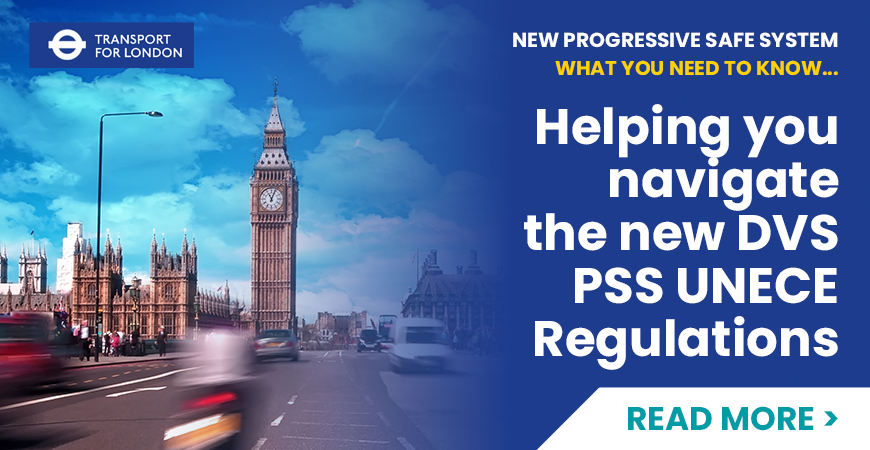UNECE Regulations – What they mean for you and your Fleet.
In response to the recent clarification regarding the forthcoming DVS 2024 changes, this article aims to outline the significance of adhering to required UNECE regulations when considering safety solutions for your fleet vehicles.
Below we will highlight the full list of UNECE regulations that will be crucial for achieving Progressive Safe System (PSS) compliance.
Ensuring meticulous product selection is paramount, as many kits available along with a number of solutions on the market will not align with these critical regulations.
Any Non-compliant or incorrectly installed kits will fall short of meeting the regulations of the Direct Vision (PSS) Standard and mean your fleet doesnt meet the standard and could be fined.
At EchoMaster, we are committed to offering cutting-edge solutions that not only incorporate the latest technology but also adhere to the regulations stipulated in the DVS guide.

What are these regulations and what do they mean for fleets and installers.
R46: UNECE Regulations No. 46 – Class V & VI Mirrors or a Camera / Monitor System
UNECE Regulation No. 46 (R46) focuses on devices for indirect vision and their installation.
It establishes a test procedure to determine if mandatory and optional Heavy Goods Vehicle (HGV) mirror classes allow the driver to meet a specific minimum field of vision requirement.
Notably, only camera monitor systems with UN ECE Regulation 46 approval can replace compulsory mirrors.
R151: UNECE Regulations No. 151 – Blind Spot Information System
This regulation outlines key requirements to enhance cyclist safety. It mandates early activation of information signals when a bicycle might enter a critical area. Drivers should also receive signals when a collision becomes unavoidable.
The Blind Spot Information System (BSIS) should alert the driver when a cyclist may be endangered while a large vehicle is turning, with signals becoming more prominent as collision risks increase.
The BSIS must also distinguish non-vulnerable objects like street furniture, traffic signs, and parked cars but can signal imminent collisions.
Read the full regulation document here.
R159: UNECE Regulations No. 159 – Moving off Information Systems (MOIS)
UNECE Regulation 159 aims to reduce collisions between vehicles and vulnerable road users (VRUs), especially pedestrians and cyclists. It mandates uniform moving off information systems for new vehicles in categories M2, M3, N2, and N3.
Buses, coaches, and medium to large heavy goods vehicles, known for their complex blind spots, must have an information signal to alert drivers when pedestrians or cyclists enter blind spot areas during vehicle movement.
Additionally, R159 requires a signal when a collision becomes imminent, such as when a vehicle accelerates from rest with a pedestrian or cyclist directly in front.
Read the full regulation document here.
Regulations No. 73: UNECE Regulation No. 73 on Lateral Protection Devices
Side under-run protection is a critical safety feature that must be fitted to both sides of a vehicle, except in cases where it is demonstrably impractical.
This commercial grade protection equipment must comply with UNECE Regulation 73, which establishes uniform provisions for the approval of goods vehicles, trailers, and semi-trailers concerning lateral protection.
At EchoMaster, we are dedicated to providing solutions that meet these standards, guaranteeing the safety of your fleet and all road users.
Our dedicated team can work with you to understand your full requirements to ensure your make informed decisions to prioritise safety across your vehicle fleet as you prepare for the DVS 2024 changes.
If you still have questions about any of the above information or want to know more about our upcoming Progressive Safe System compliant product kits email echomaster@aampglobal-eu.com or call +44(0)1420 487110.
To view our current & comprehensive vehicle safety solutions including cameras, monitors, sensors, warning alarms and much more – CLICK HERE

